INTRODUCCIÓN AL DUNEDIN SOUND - Guía para principiantes
5 participantes
Página 1 de 1.
 INTRODUCCIÓN AL DUNEDIN SOUND - Guía para principiantes
INTRODUCCIÓN AL DUNEDIN SOUND - Guía para principiantes
INTRODUCCIÓN AL DUNEDIN SOUND
- Guía para principiantes -
- Guía para principiantes -

A petición del gran Eloy, he realizado una lista de lo que considero 10 discos esenciales para introducirse en el DUNEDIN SOUND. Esta no es una lista de los 10 mejores discos de aquella escena sino 10 álbumes para todos aquellos que hayan escuchado poco o nada de toda aquella movida y quieran adentrarse poco a poco con esta selección de discos con un "sonido accesible" y, por supuesto, de gran calidad.
1. The Gordons – The Gordons (1981)

The Gordons is the only album The Gordons released through Flying Nun. Their 1982 follow up and final studio album under the same name—they later reformed as Bailter Space and signed to Matador—Volume 2, was self-released. The Gordons is equally significant to the legacy of Flying Nun as The Clean’s “Tally Ho” and “Platypus”; it was a crippling and irreverent collection of sharp guitar spasms and deflated grooves, ripping bits from both the post-punk playbook and the spasmodic noise-rock of Wire’s late ’70s period. It’s hard to imagine an era of bands such as Slint, Polvo, and Unwound without somebody like The Gordons paving the way.
Most songs on The Gordons run well over four minutes, each one diving deeper and deeper into undiscovered instrumental territory, its (DNA eventually heavily influencing facets of both math and noise rock. Alister Parker and John Halvorsen’s vocals are deep, brooding and menacing, their guitar work glass shattering; Brent McLaughlin’s drumming patterns occasionally tight, often polyrhythmic. Flying Nun came out with two completely different beasts, The Clean rising to prominence and influence, The Gordons drowning in their own self-induced obscurity.
-----------
2. Look Blue Go Purple – Bewitched (1985)

It should come as no surprise that the bulk of Flying Nun’s discography consisted of dudes and guitars, much like majority of the indie rock canon, particularly in its formative years. But what made Look Blue Go Purple such a unique and vital act to Flying Nun’s roster wasn’t the fact that it consisted entirely of women—though, for this era of guitar-based music, that was less visible—but the blend of breezy, gentle-pop they crafted, drawing influence from the Velvet Underground, minus the droning and disturbed epics. Instead, on Bewitched, a four song EP, Look Blue Go Purple turned toward flute arrangements, lush yet imperfect backing harmonies, and an identity that resonated most with the aesthetic of kiwi-pop—like the country they hailed from, their music sounded otherworldly and spacious, as if the scenery of New Zealand was captured in four songs.
To listen to a song by Look Blue Go Purple is to ride an endless wave, their climactic percussion chugging along, sounding as if it were your own heartbeat. Bewitched isn’t just music, but a mood, capable of conveying emotions you thought might be impossible to express. “Vain Hopes” does exactly this, a seance of sort, a collective consciousness guiding you along to places you could have never imagined. Norma O’Malley’s flute contributions are hypnotic, Kath Webster and Denise Roughan’s guitars equally soporific, droning in a way that doesn’t feel forced but instead incredibly at ease. Never before had Flying Nun released something so singular.
-----------
3. The Chills – Kaleidoscope World (1986)

It’s nearly an objective truth that The Chills are the quintessential Flying Nun band. I’m also cheating for this one: Kaleidoscope World is technically a compilation album. But so much of The Chills’ legacy sits in this compilation, and it would be blasphemy to exclude it. Whereas most Flying Nun bands had distinctive characteristics, The Chills sound like every single one of these bands, borrowing a thing or two from each playbook to craft something completely unique. The Clean’s jangle, Look Blue Go Purple’s patient, soft-rock approach—these are all very much apparent in Kaleidoscope World, and it’s a steadily joyful 58 minutes of eccentric guitar rock.
“Pink Frost,” one of Kaleidoscope World’s most memorable tracks, showcases frontman Martin Phillipps’ expertise and understanding of that timeless, soft-rock I’ve relentlessly been mentioning. It’s a repeatable song by so many standards. “This Is the Way” and “Doledrums” drive a unique and steady attitude into the ground, and “Hidden By” sounds uncontrollably manic and scattered. Yet, Kaleidoscope World is another one of those albums—or compilations—that heavily depends on each individual track. Any detail removed and the album falls apart. Oh yeah, and David Kilgour was a member for a while, too.
-----------
4. The Bats – Daddy’s Highway (1987)

No band captured the Dunedin sound’s aesthetic better than The Bats, and their debut studio album, Daddy’s Highway, epitomized the twee, jangly rock Flying Nun has so carefully fostered since their inception. For those who have lost countless hours browsing and flipping through stacks of records in their local shop, the ventriloquist dummy on the album cover of Daddy’s Highway is instantly recognizable, and equally startling. Though the common recording methods of Flying Nun’s most prominent bands bordered lo-fi, the production of Daddy’s Highway is surprisingly clean, the vocal melodies much easier to follow than that of the Clean or the Chills.
Daddy’s Highway ripples and frolics, its playful melodies consistent and never overbearing. The Bats were at the top of their game when they released Daddy’s Highway, and they were never able to recapture that magic again. Daddy’s Highway bears heavy resemblance to the Replacements’ Let It Be and Pixies’ Doolittle—not for the literal sound, but for the magic found within. All three groups are incredible in their own right, and they all have a few masterpieces of their own, but the connection Daddy’s Highway, Let It Be, and Doolittle share is the once in a lifetime magic they were capable of capturing. Daddy’s Highway is that rare, definitive moment in time where everything aligns, escaping them the moment the studio sessions concluded.
-----------
5. Able Tasmans – A Cuppa Tea and a Lie Down (1987)
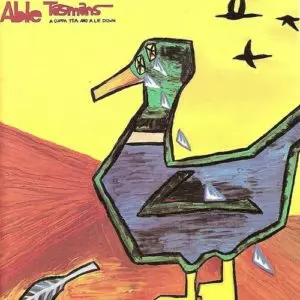
Able Tasmans’ influences lie more in Look Blue Go Purple’s curiosity than any other Flying Nun band. Their hilariously titled debut studio album, A Cuppa Tea and A Lie Down, finds Able Tasmans tinkering with lively piano arrangements, lushly layered organs, and twangy acoustic guitars. Able Tasmans looked at the Talking Heads and Meat Puppets for inspiration when the rest of Flying Nun’s bands looked at Wire or the Modern Lovers. There’s a certain and obvious playfulness that lingers from song to song on A Cuppa Tea and A Lie Down, a lack of self-seriousness—this only works in their favor, testing the limits of what makes a cohesive structure that somewhat resembles a pop song.
Like the glitchy rolls of “Patrick’s Mother,” the funky, funeral-prance of “Rain in Tulsa” sounds like a monster’s funeral, something celebratory on the surface, but still rather menacing and dark in its mood. Tasmans even attempt a punk song with “Tom Song,” but instead they hopscotch back and forth between groovy, bouncing piano rolls and lockjaw D-beats. A Cuppa Tea and A Lie Down still sounds revelatory, an approach often imitated but never quite delivered in the manner Able Tasmans are capable of.
-----------
6. The Verlaines – Bird Dog (1987)

Crafty New Zealand pop group lead by song craftsman Graham Downes that leaned heavily toward Baroque classicism on this exquisite collection of tales from 1987. Their art was in the subtlety of arrangements, and the group was pivotal in defining the complex simplicity of the Flying Nun sound alongside the Clean and the Chills. The Verlaines were certainly the first of the family in the '80s to embrace truly classical modality in their delicate pop sound, and the result is Bird Dog, as a sophisticated and glorious album of Downes' distinct genius, whose only peers would be Robert Forster and Martin Phillips. Although his craft may be fastidious, the Verlaines have mastery of rendering it effortless on Bird Dog.
Later their sound may have become a little more stilted, but for a group so ahead of their time, anything is forgivable, although many fans of this character and eccentricity displayed here may believe the edge was lost in the '90s when they pursued a straighter MOR sound. With Hallelujah All the Way Home and Some Disenchanted Evening on either side of this release, it is difficult to think of another group who made three albums of this quality in five years.
-----------
7. Straitjacket Fits – Hail (1988)

Hail is an album that beautifully showcases the many strengths of Straitjacket Fits in the early part of their development. It is a record full of furious off-piste guitaring and startling vocals anchored by a granite hard rhythm section but that also showcases gentler melodic material including a cover of Leonard Cohen’s ‘So Long Marianne’. But generally the songs are more experimental in nature with a considerable range of material from Andrew Brough’s standout ‘Fabulous Things’ to the vigorous guitar noise of Shayne Carter’s ‘Grate’.
The songs ‘Hail’ and ‘Grate’ suggested a monolithic guitar monster future and, while that is part of what can be found on Hail, there is a remarkable diversity of song and sound on show. The oft-described Shayne Carter/Andrew Brough duality of sour/hard and sweet/soft is a simplified observation of what is a much deeper and richer stew of ideas and sounds. Hail is a documentation of a band on the up, a band flexing its potential and oozing confidence and optimism. With Hail the Straitjacket Fits were well on their way to giving the rock ‘n’ roll thing their very best shot.
-----------
8. The Dead C – Eusa Kills (1989)
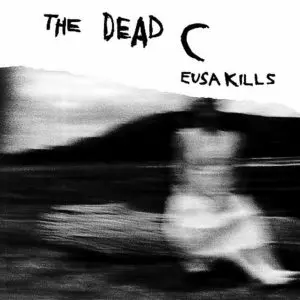
Before The Dead C mutated into an utterly terrifying collective of free noise and drone rock, the Dunedin trio was discovering and experimenting with what would later become the sound they’re best known for: flat out disturbed noise-rock, traditional song structures long in the rearview mirror. But this was 1989, their salad days. The Dead C had signed with Flying Nun the year before, and their debut, DR503, was featherweight compared to their later releases with Siltbreeze. What followed DR503 was Eusa Kills, their second studio album and last for Flying Nun—possibly the most accessible in the Dead C’s discography, predicating their ominous departure into a world of noisy esoterica.
Though Eusa Kills is still easily considered “noise rock,” for most ears, it’s corybantic territory, feral yet surprisingly groovy. Its “accessibility” is still very much a long shot, but the consistent stability of its song structures make for an accessible release, especially for a band as unidentifiable and niche as the Dead C. Eusa Kills is also an incredibly vital historical document for Flying Nun. Where The Clean, The Bats and Look Blue Go Purple had all, in one way or another, built up a reputation for breezy, gentle “rock” music, the Dead C picked up where The Gordons left off in 1981—creating something entirely arcane, immersed in their own fits of noise and redefining guitar rock in the process.
-----------
9. The Clean – Vehicle (1990)

The Clean are perhaps the first band to ever release a “greatest hits” compilation before a debut studio album. Though The Clean originated in 1978, their first full length, Vehicle, wasn’t released until 1990. In that 12-year period, frontman David Kilgour assembled a “fat songbook,” and The Clean released a slew of EPs, live albums, and compilations, most notably 1983’s Odditties and 1986’s Compilation. Though the wait for Vehicle was obnoxiously prolonged, it was ultimately worth it, as it proved to a be a living historical document of indie rock’s earliest roots. The hyper lo-fi methods seen on their most beloved 1981 singles “Tally Ho” and “Platypus” were long forgotten in the studio, but the stylistic blueprints were still very much prevalent when recording Vehicle.
It’s hard to imagine indie rock as a concept, technique, and an attitude without The Clean. David Kilgour was proficient in a language that Stephen Malkmus and Ira Kaplan could only hope to learn from, disguising perfect pop songs with layers of distortion, melodic guitar leads, and driving, “motorik” drumming tactics. Vehicle didn’t so much embody indie rock as it was indie rock in its perfected form—too cockeyed to be power pop, too melodic and jangly to resemble punk rock, too simplistic to edge toward experimental. The scatterbrained opener, “Draw(in)g to a W(h)ole,” the bouncy, organ-led goodbye on “Bye Bye,” and the driving force of “Some Ones” are The Clean at their finest and hungriest, and the live document that is “Point That Thing Somewhere Else” sounds like a Yo La Tengo fever dream. But it’s the sparse, acoustic closers “I Can See” and “Gem” that truly showcase Kilgour’s ability to craft euphoric love songs. Vehicle is still as emotionally pervasive now as it was in 1990.
-----------
10. The 3Ds – Hellzapoppin (1992)
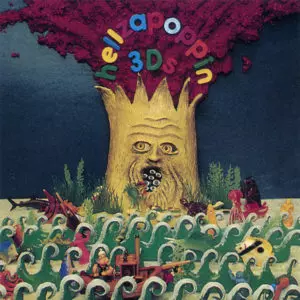
Listening to Hellzapoppin now, it’s difficult not to hear both Stephen Malkmus and Black Francis. By September, 1991, when Hellzapoppin was originally released within New Zealand, Doolittle had already become somewhat of a canonical staple, and though Slanted and Enchanted didn’t arrive until April of 1992, Pavement had already released a slew of singles and EPs, slowly but surely garnering the attention of a strange, anti-rock scene happening in NYC, then adopted by noise-rock overlords Sonic Youth. But it could also be argued that Hellzapoppin inspired Crooked Rain, Crooked Rain—the era (1994) in which Pavement emerged as a semi-serious collective crafting tasteful, pop-oriented songs.
Nevertheless, the impact of Hellzapoppin was nowhere near that of The Clean or The Chills—it didn’t even appear on a single radio chart within New Zealand. 3Ds came a decade too late, though their sound is timeless, still sounding innovative in 2018. The high-note plucks and tossed-off distortion of “Swallow” and the pop-friendly hook and lead of “Sunken Treasure” help identify and categorize 3Ds with the “Dunedin sound,” but that’s about it. Everything about Hellzapoppin is supremely different from any Flying Nun band, and David Mitchell and David Saunders’ guitar work sounded playful, constantly attacking each other with twin-guitar attacks and tantrums.
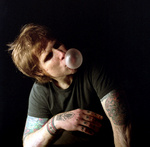
Peaky Blinder- Mensajes : 3454
Fecha de inscripción : 13/03/2010

Boohan- Mensajes : 54506
Fecha de inscripción : 25/03/2008
 Re: INTRODUCCIÓN AL DUNEDIN SOUND - Guía para principiantes
Re: INTRODUCCIÓN AL DUNEDIN SOUND - Guía para principiantes
No te había dado las gracias todavía.
Maravillosa selección, una perfecta guía de entrada a ese mundo.




Maravillosa selección, una perfecta guía de entrada a ese mundo.




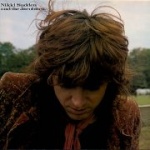
Eloy- Mensajes : 85503
Fecha de inscripción : 25/03/2008
 Re: INTRODUCCIÓN AL DUNEDIN SOUND - Guía para principiantes
Re: INTRODUCCIÓN AL DUNEDIN SOUND - Guía para principiantes
Espectacular... Al igual que el hilo oficial Dunedin
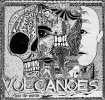
luis- Mensajes : 15683
Fecha de inscripción : 01/04/2008
 Re: INTRODUCCIÓN AL DUNEDIN SOUND - Guía para principiantes
Re: INTRODUCCIÓN AL DUNEDIN SOUND - Guía para principiantes
luis escribió:Espectacular... Al igual que el hilo oficial Dunedin
El otro hilo es top de la Historia del foro.
Por cierto hoy me llega el último de The Bats, que lo vi baratillo en Amazon
A ver qué tal...

Eloy- Mensajes : 85503
Fecha de inscripción : 25/03/2008
 Re: INTRODUCCIÓN AL DUNEDIN SOUND - Guía para principiantes
Re: INTRODUCCIÓN AL DUNEDIN SOUND - Guía para principiantes
Eloy escribió:luis escribió:Espectacular... Al igual que el hilo oficial Dunedin
El otro hilo es top de la Historia del foro.
Por cierto hoy me llega el último de The Bats, que lo vi baratillo en Amazon
A ver qué tal...
El Foothills...Una maravilla Eloy, disco del año 2020 para Deniz y para mi...
El anterior es acojonante también, Deep Sect ... Pero este está imposible, es más barato ir a Nueva Zelanda y traérselo

luis- Mensajes : 15683
Fecha de inscripción : 01/04/2008
 Re: INTRODUCCIÓN AL DUNEDIN SOUND - Guía para principiantes
Re: INTRODUCCIÓN AL DUNEDIN SOUND - Guía para principiantes
luis escribió:Eloy escribió:luis escribió:Espectacular... Al igual que el hilo oficial Dunedin
El otro hilo es top de la Historia del foro.
Por cierto hoy me llega el último de The Bats, que lo vi baratillo en Amazon
A ver qué tal...
El Foothills...Una maravilla Eloy, disco del año 2020 para Deniz y para mi...
El anterior es acojonante también, Deep Sect ... Pero este está imposible, es más barato ir a Nueva Zelanda y traérselo

Eloy- Mensajes : 85503
Fecha de inscripción : 25/03/2008
 Re: INTRODUCCIÓN AL DUNEDIN SOUND - Guía para principiantes
Re: INTRODUCCIÓN AL DUNEDIN SOUND - Guía para principiantes
Muchas ganas de darle un tiento al Foothills
Estuve tentado ayer de ponérmelo en spoty pero prefiero darle las primeras escuchas en CD
Estuve tentado ayer de ponérmelo en spoty pero prefiero darle las primeras escuchas en CD

Eloy- Mensajes : 85503
Fecha de inscripción : 25/03/2008
 Temas similares
Temas similares» Flying Nun Records/Dunedin Sound - Indie Pop MADE IN NEW ZEALAND
» Guía para ligar en Euskadi
» Guia para futuros Kobeteros
» Guía para triunfar como César Martín (The Man)
» Los Sureños no llevan Paraguas – Guía práctica para no acabar linchao en Dixie
» Guía para ligar en Euskadi
» Guia para futuros Kobeteros
» Guía para triunfar como César Martín (The Man)
» Los Sureños no llevan Paraguas – Guía práctica para no acabar linchao en Dixie
Página 1 de 1.
Permisos de este foro:
No puedes responder a temas en este foro.
 Índice
Índice